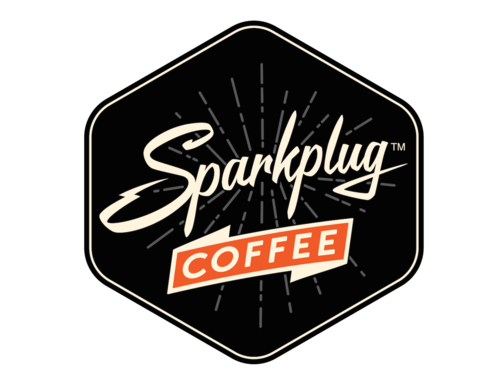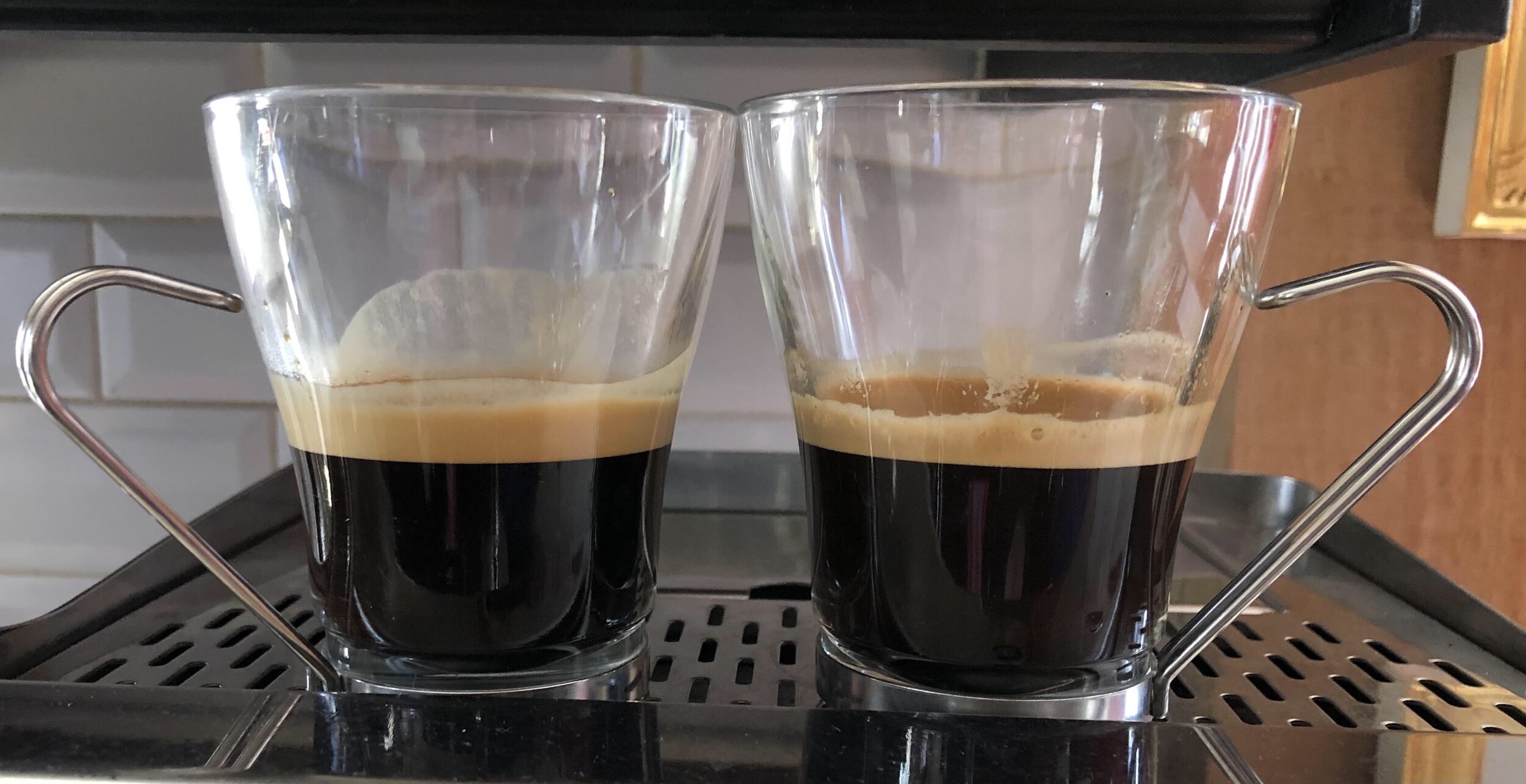How to Get the Best from your Espresso Machine
Guest blogger Oli Baise shares his expertise to help you pull great shots from your home espresso machine.
Making espresso with an espresso machine can be a bit more fiddly than making drip coffee or brewing with a moka pot.
This is because when you make espresso you’re brewing very quickly and with relatively low quantities of water.
This means that you have very little room for error when it comes to extraction. If your ground coffee does not extract into your water immediately when contact is made between the two, then there just won’t be enough time for sufficient extraction to occur.
Under-extracted espresso shots are unpleasantly sour, which is something that we want to avoid.
We reveal the secret to making great espresso at home
Here we are going to go through how to use a basic portafilter-driven espresso machine in a way that gives you the best chance of achieving optimal extraction when you brew.
1. Use Coffee Beans That Have Been Specially Roasted for Espresso
Coffee roasters understand the specific challenges you’ll face when brewing espresso.
They therefore will create espresso blends that are specifically roasted in a way that promotes easy, fast extraction when being brewed into espresso.
Generally, coffee roasted for espresso tends to be roasted darker than other blends.
Roasting coffee darker brings more of its soluble compounds to its surface meaning that it can extract faster into water than lighter roasts.
Darker roasts are therefore particularly good for beginner espresso makers as they are a bit more forgiving when it comes to getting sufficient extraction.
Sparkplug’s Globetrotter dark roast is particularly good for people starting out on their espresso making journey.
You may have seen or heard people say that you cannot use oily beans with an espresso machine.
This is only true if you have a super automatic espresso machine as oily beans can clog up their internal mechanisms.
If you have a super automatic espresso machine then I recommend using Sparkplug’s Super Automatic blend with it. These beans are less oily than other espresso blends and are designed to be used with a super automatic machine.
2. Warm Up Your Espresso Machine Prior to Brewing
Espresso should be brewed at a temperature of 90-95 Celsius / 195-204 Fahrenheit. (This is the optimal temperature range for most coffeemaking.)
If it is brewed at a lower temperature, your espresso will likely come out under-extracted.
Extraction is simply the process of the soluble compounds in your ground coffee dissolving into your brewing water. Solids dissolve faster in hotter liquids - this is why sugar dissolves quickly in hot water but much more slowly into cold water.
While your espresso machine will heat your water to this ideal brewing temperature, by the time it hits your coffee sitting in a cold, metal portafilter basket, it will drop below this temperature.
The portafilter is where your ground coffee sits during brewing
You can stop this temperature drop from happening by warming up your portafilter before brewing.
The easiest way to do this is to pull a “blank shot” that is a shot with your portafilter in but without any ground coffee in your portafilter.
The boiling water running through your portafilter during this blank shot will warm it up to the point where it won’t significantly cool down your brewing water for your actual shot.
3. Use the Right Kind of Portafilter Basket for Your Grind Type
There are two types of portafilter baskets: pressurized and non-pressurized.
Pressurized portafilter baskets have one hole in its bottom where all your liquid espresso is forced through after it flows through your coffee bed.
Non-pressurized portafilter baskets have hundreds of holes in their bottom which your liquid espresso can freely flow through after it has passed through your coffee bed.
The red circle shows the single hole on the bottom of the pressurized portafilter basket
If you are brewing with pre-ground coffee then you should use a pressurized portafilter basket.
The longer your coffee has been ground for, the faster water will flow through it. Therefore pre-ground coffee needs the bottleneck created by a singular hole for there to be enough contact time between coffee and water for sufficient extraction to occur.
If you are brewing with freshly ground coffee then you should use a non-pressurized portafilter basket.
Water flows less quickly through freshly ground coffee than pre-ground. You therefore do not need the extra bottleneck created by a pressurized portafilter basket.
Pressurized portafilter baskets add a layer of fake crema to your espresso. They should therefore be avoided if possible (but they still work better with pre-ground coffee than non-pressurized portafilter baskets).
4. Aim for a Specific Brew Ratio and Time
Espresso brewing is “measured” by brew ratio and brewing time.
Brew ratio refers to the ratio between your initial ground coffee dose and final output of liquid espresso (called “yield).
A 1:2 brew ratio is pretty standard for espresso, and is a good place to start.
You can only measure brew ratio by weighing out your initial dose of ground coffee and your final espresso. Yield cannot be measured by volume because crema significantly adds to your drinks’ volume without actually adding more liquid.
I suggest buying a small scale that you can fit under your cup while you brew to measure your yield. Stop brewing once your yield is hit.
Brew time is also an important variable to control. It's important to brew for a certain length of time because this determines how long your ground coffee is in direct contact with your brewing water.
Too short a brewing time means that your coffee has not had enough contact time with your water to extract fully. Your final shot will be under-extracted and sour if your brewing time is too quick.
Too long a brewing time means your coffee has too much direct contact time with your brewing water. This over extraction means that some of your coffee’s bitter compounds are extracted into your water which creates a harsh tasting drink.
A brewing time of 25-30 seconds is ideal for most espresso blends.
5. Use Grind Size to Adjust Brewing Time
Now we know that we need to stick to a specific brew ratio and aim for a certain brew time, the natural question is: how do we change our brew time if we have the same quantity of ground coffee and brewing water?
The answer lies with grind size.
The finer we grind, the smaller the spaces will be between each individual coffee grind.
This means that water will take longer to flow through finer ground coffee than coarser ground coffee.
If your brewing time is too quick then grind finer, if it's too slow (or comes out unevenly) then grind coarser.
This is a more fine tuned way of adjusting your espresso’s flavor than messing around with the quantity of coffee and brewing water.
Final Thoughts
To get good extraction with espresso making we need to make sure that:
Our brewing temperature is between 195-204 Fahrenheit / 90-95 Celsius
We are using coffee blends that are roasted for espresso brewing
We have the right amount of contact time between our ground coffee and brewing water (between 25-30 seconds)
We are using a non-pressurized portafilter if we are brewing with freshly ground coffee, and a pressurized portafilter if we are brewing with pre ground coffee.
Follow these rules and you should be pulling great espresso shots in no time.
Thank you to Oli Baise, barista and the managing editor of coffee blog Drinky Coffee, for writing this article for us.
Put some Sparkplug coffee in your espresso maker:




